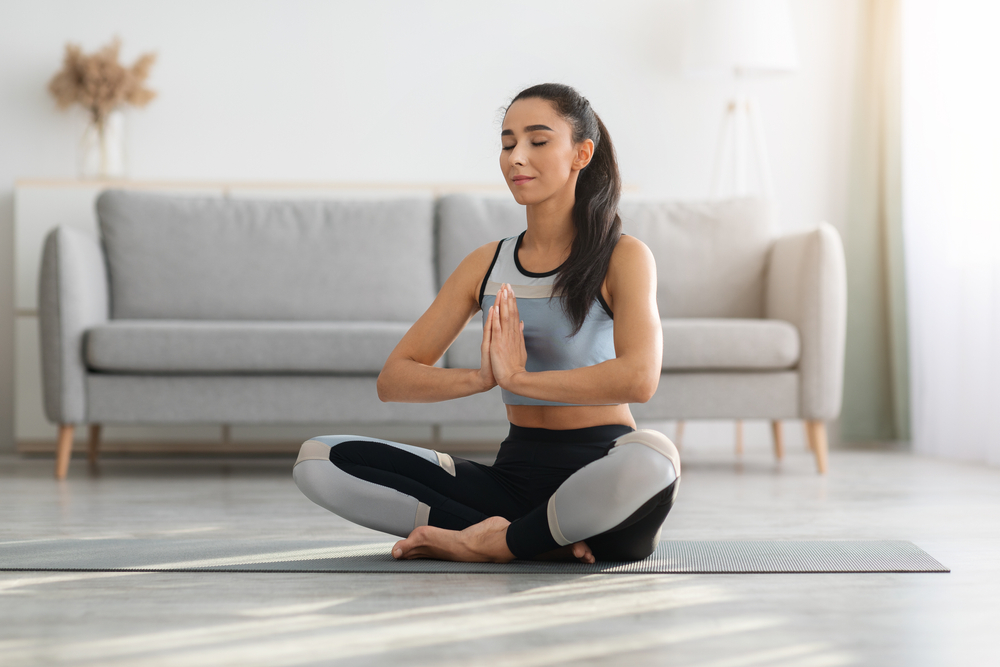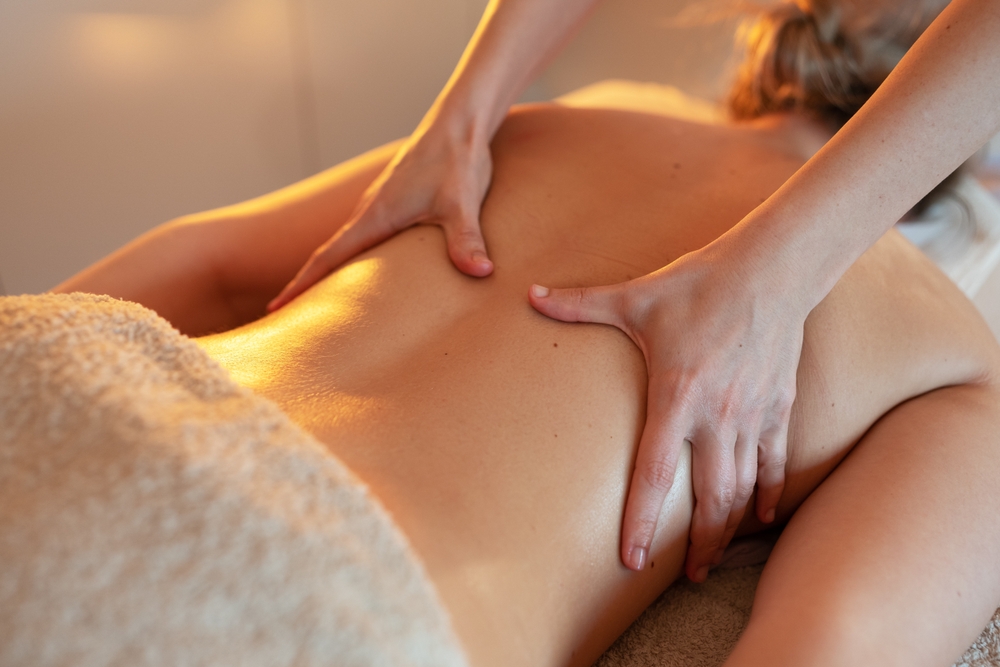Dealing with pain can really wear you down. It's tough when discomfort is always there. But what if there were simple ways to find some relief, just by changing how you approach things? This article looks at different methods that can help you feel better, focusing on how relaxation for pain is totally achievable. We'll explore some easy techniques you can try right now to start feeling a bit more at ease.
Key Takeaways
- Deep breathing is a quick way to calm your body and mind when pain hits.
- Mindfulness helps you focus on the present, taking your attention away from discomfort.
- Gentle movements like stretching or Tai Chi can ease muscle tension and pain.
- Guided imagery lets your mind travel to a peaceful place, offering a mental break from pain.
- Progressive muscle relaxation teaches you to release physical tension, which can lessen pain.
Embrace Deep Breathing for Instant Calm
Feeling overwhelmed or like your body is holding onto a lot of tension? You're not alone. Sometimes, the simplest things can make a big difference, and your breath is one of them. It's always with you, ready to help you find a moment of peace.
The Power of Your Breath
Think about it – when you're stressed, your breathing gets shallow and fast, right? That tells your brain to get ready for action. But what if you could flip that switch? By consciously slowing down your breath, you send a signal to your body that it's safe to relax. It’s like a gentle nudge to your nervous system, saying, “Hey, everything's okay.” This simple shift can really help ease that feeling of being on edge and can be a great starting point for managing pain. Learning about different breathing techniques can be really eye-opening.
Simple Breathing Techniques
Getting started is easier than you might think. Here are a couple of easy ones:
- Diaphragmatic Breathing (Belly Breathing): Lie down or sit comfortably. Place one hand on your chest and the other on your belly. Breathe in slowly through your nose, feeling your belly rise more than your chest. Breathe out slowly through your mouth, letting your belly fall. Try to make your exhale a little longer than your inhale.
- 4-7-8 Breathing: Inhale quietly through your nose for a count of 4. Hold your breath for a count of 7. Exhale completely through your mouth, making a “whoosh” sound, for a count of 8. Repeat this cycle a few times.
Finding Your Rhythm
Don't worry about doing it perfectly at first. The goal is just to practice. Try to find a pace that feels comfortable and natural for you. Maybe it's a slow, steady inhale and exhale, or perhaps you prefer holding your breath for a moment. Pay attention to how your body feels as you breathe. You might notice your shoulders dropping, or a general sense of ease spreading through you. Consistency is more important than perfection when it comes to making deep breathing a regular part of your pain relief routine. Even just a few minutes a day can start to make a noticeable difference in how you feel.
Mindfulness: Your Anchor in the Storm
Life can feel like a whirlwind sometimes, right? Especially when you're dealing with pain. It's easy to get caught up in worries about the past or anxieties about the future. But what if there was a way to find a bit of peace right here, right now? That's where mindfulness comes in. It's not about emptying your mind or achieving some mystical state; it's simply about paying attention to what's happening in the present moment, without judgment. Think of it as hitting the pause button on all the mental chatter.
The Power of Your Breath
Your breath is always with you, a constant companion. It's a simple, natural anchor that can bring you back to the present. When pain flares up, our breathing often becomes shallow and quick, which can actually make us feel more stressed. By consciously slowing down and deepening your breath, you send a signal to your body that it's okay to relax. It’s a direct line to your nervous system, helping to calm things down.
Simple Breathing Techniques
Getting started with mindful breathing is easier than you might think. You don't need any special equipment or a quiet room, though those can help. Try this: just notice your breath as it enters and leaves your body. Feel the sensation of the air moving in through your nose or mouth, filling your lungs, and then gently exhaling. If your mind wanders (and it will!), that's perfectly fine. Just gently guide your attention back to your breath. It's a practice, not a performance.
Finding Your Rhythm
There's no one-size-fits-all approach to mindful breathing. Some people find counting their breaths helpful, like inhaling for a count of four and exhaling for a count of six. Others prefer to focus on the physical sensations – the rise and fall of their chest or abdomen. Experiment and see what feels most natural and soothing for you. Even just a few minutes of focused breathing can make a difference in how you feel, helping you to stay grounded when pain tries to pull you away. Mindfulness is like a gentle hand on your shoulder, reminding you that even amidst discomfort, there's a space for calm and awareness. It's about being present with whatever is happening, not trying to change it, but simply observing it with kindness.
Gentle Movement for Soothing Relief
Sometimes, when pain flares up, the last thing you want to do is move. But gentle movement can actually be a fantastic way to ease that discomfort. It's not about intense workouts; it's about finding ways to help your body feel better through slow, deliberate actions.
Stretching Away Tension
Think about how a cat stretches after a nap – long, slow, and purposeful. We can do the same! Simple stretches can release tight muscles that might be contributing to your pain. Try things like reaching your arms overhead, gently twisting your torso, or doing a simple forward fold. Even just a few minutes can make a difference. It’s about listening to your body and moving in ways that feel good, not forced.
The Benefits of Tai Chi
Have you ever seen people doing slow, flowing movements in a park? That's often Tai Chi. It's a practice that combines slow, graceful movements with deep breathing. It's really good for balance and can help reduce stress, which often goes hand-in-hand with pain. It’s a very mindful way to move your body and can be quite calming.
Finding Your Flow
Getting into a rhythm with gentle movement can be incredibly soothing. It’s about finding activities that you enjoy and that don't add to your pain. This could be anything from a slow walk outside to some simple yoga poses. The key is consistency and finding what works for you. Remember, even small amounts of movement can help. Moving your body gently doesn't have to be complicated. Focus on smooth transitions between movements and breathing naturally throughout. The goal is to encourage blood flow and release muscle tightness without causing more strain. It’s a way to reconnect with your body in a positive, supportive manner.
If you're looking for some specific ideas, there are great resources for at-home exercises that focus on easing pain, like gentle exercises for pain.
Guided Imagery: Your Mental Escape
Sometimes, when pain feels overwhelming, our minds can get stuck in a loop of discomfort. Guided imagery is like giving your brain a vacation, a chance to step away from the physical sensations and into a place of peace. It’s a way to use your imagination to create a mental escape, and it can be surprisingly effective for managing pain.
Creating Your Peaceful Place
Think about a place where you feel completely safe and relaxed. Maybe it’s a quiet beach with gentle waves, a cozy cabin in the woods, or even a favorite armchair in your home. What do you see there? What sounds do you hear? What does it smell like? The more details you can bring into your mind, the more real it becomes. Focusing on these sensory details helps shift your attention away from pain. You can revisit this place anytime you need a break.
Visualizing Healing
Once you've found your peaceful spot, you can start to visualize healing. Imagine a warm, soothing light flowing through your body, easing any tension or discomfort. Picture yourself feeling lighter and more comfortable. It’s not about pretending the pain isn't there, but rather about directing your mental energy towards feelings of ease and well-being. This practice can help change your body's response to pain signals, making them feel less intense. You can explore different ways to visualize healing, like imagining a gentle breeze washing away discomfort or a soft blanket of warmth covering the painful area. It’s all about what feels right for you and your personal experience.
The Art of Mental Rehearsal
Guided imagery also involves a kind of mental rehearsal for feeling better. You can imagine yourself moving with ease, engaging in activities you enjoy, and feeling strong and capable. This mental practice can build confidence and prepare your mind and body for positive experiences, even when pain is present. It’s like practicing a skill – the more you do it, the better you become at accessing those feelings of calm and relief. Try to incorporate these mental escapes into your daily routine, even for just a few minutes, to build a stronger connection with your inner sense of peace.
Progressive Muscle Relaxation: Unwinding Your Body
Feeling all wound up? Progressive Muscle Relaxation, or PMR, is a fantastic way to literally unwind your body, one muscle group at a time. It’s like giving your muscles a mini-vacation. The basic idea is simple: you intentionally tense a group of muscles, hold it for a few seconds, and then release. You’ll be surprised at how much tension you can hold without even realizing it!
Tensing and Releasing
This is the core of PMR. You'll go through your body, starting with your toes and working your way up. For each muscle group, you'll tense it – think clenching your fists or scrunching your toes – and then let go. It’s important to really feel the difference between the tension and the relaxation that follows. This contrast helps you recognize and release tension more effectively.
Feeling the Difference
As you practice, you’ll start to notice the subtle shifts in your body. That feeling of release after tensing a muscle? It’s pure bliss! Many people find that this practice helps them identify areas where they habitually hold stress, like their shoulders or jaw. Becoming aware of this tension is the first step to letting it go.
A Full Body Scan
Here’s a typical sequence you might follow:
- Feet and Toes: Curl your toes tightly.
- Calves: Point your toes upwards towards your shins.
- Thighs: Tighten your thigh muscles.
- Buttocks: Squeeze your glutes.
- Abdomen: Tighten your abdominal muscles.
- Chest: Take a deep breath and hold it.
- Arms and Hands: Make tight fists.
- Shoulders: Shrug your shoulders up towards your ears.
- Neck: Gently press your head back into a chair or the floor.
- Face: Clench your jaw, furrow your brow, or press your tongue against the roof of your mouth.
Remember to breathe normally throughout the process. You can find some great resources on how to practice PMR if you want to get started right away. It’s a simple yet powerful tool for managing stress and finding a sense of calm.
The Comfort of Sound and Music
Sometimes, when pain just won't quit, you need a little help from your ears. Sound and music can be surprisingly powerful tools for shifting your focus and easing discomfort. It’s not just about distraction, though; certain sounds and melodies can actually influence your body’s response to pain. Think of it like a gentle nudge away from the ache and towards a feeling of peace.
Melodies That Heal
Music has this amazing ability to tap into our emotions and even our physical sensations. Upbeat tunes can energize you, while slower, more melodic pieces can help calm your nervous system. Have you ever noticed how a familiar song can bring back a flood of memories or change your mood instantly? That same power can be used to help manage pain. Experiment with different genres and tempos to see what works best for you. Some people find classical music incredibly soothing, while others prefer ambient electronic sounds or even instrumental folk.
Nature's Soothing Sounds
If music isn't quite hitting the spot, nature sounds are another fantastic option. The gentle patter of rain, the rhythmic crashing of waves, or the soft chirping of birds can create a deeply calming atmosphere. These sounds often lack the complex structure of music, making them less likely to demand your attention and more likely to blend into the background, allowing your mind to relax. You can find many recordings online, or if you’re lucky, just step outside and listen. It’s amazing how much relief can come from simply tuning into the natural world. For a really focused relaxation experience, check out this 4-minute track.
Creating Your Personal Playlist
Building a go-to playlist for pain relief is a great idea. Think about what makes you feel good and relaxed. It might include a mix of instrumental tracks, nature sounds, or even songs with lyrics that inspire you. The key is to curate sounds that consistently help you unwind. Keep it handy so you can easily access it when you need it most. The right soundscape can really help you feel more in control when pain tries to take over. It’s about creating a little sanctuary for yourself, just through audio.
Don't be afraid to mix and match. Maybe you start with some calming nature sounds and then transition into a gentle melody. Finding what works for you is a personal journey, and the results can be wonderfully comforting.
Keep Going, You've Got This!
So, we've talked about a bunch of ways to find some calm when pain is getting you down. It's not always easy, and some things might work better for you than others. Don't get discouraged if the first thing you try doesn't feel like magic. Just keep experimenting with these ideas. Maybe it's a few deep breaths, a short walk, or listening to some music. Little bits of peace can really add up. You're taking steps to feel better, and that's a really big deal. Keep practicing, be kind to yourself, and you'll find what helps you relax and feel more comfortable.
Frequently Asked Questions
How does deep breathing help with pain?
Deep breathing is like a quick reset button for your body. When you take slow, deep breaths, it tells your nervous system to calm down, which can really help ease pain. It's a simple tool you can use anywhere, anytime to feel a bit better.
What is mindfulness and how does it help with pain?
Mindfulness means paying attention to what's happening right now, without judging it. When you're in pain, it's easy to get caught up in worrying about it. Mindfulness helps you focus on the present, which can make the pain feel less overwhelming.
Can moving my body help with pain?
Gentle movements, like stretching or slow exercises such as Tai Chi, can help relax your muscles and improve blood flow. This can reduce stiffness and soreness, making your pain feel less intense. It's about moving your body in a way that feels good.
What is guided imagery and how can it help?
Guided imagery is like taking a mental vacation. You imagine a peaceful place or a positive outcome, like your pain fading away. This mental escape can distract you from the pain and help your body relax, which can lead to feeling better.
How does progressive muscle relaxation work?
Progressive muscle relaxation involves tightening and then releasing different muscle groups in your body, one by one. This process helps you become aware of where you hold tension and teaches your body how to let it go, which can ease muscle pain and discomfort.
Can music or sounds help me relax and feel less pain?
Listening to calming music or nature sounds can have a powerful effect on your mood and stress levels. Soothing sounds can help slow your heart rate, lower your blood pressure, and distract you from pain, creating a more relaxed state of mind and body.



